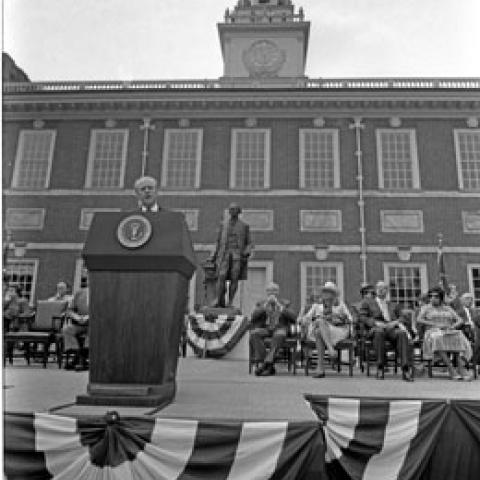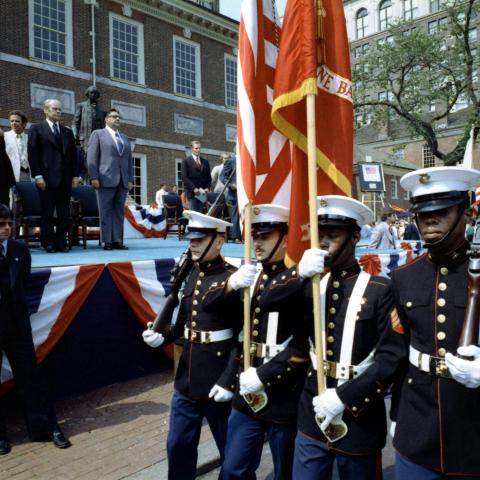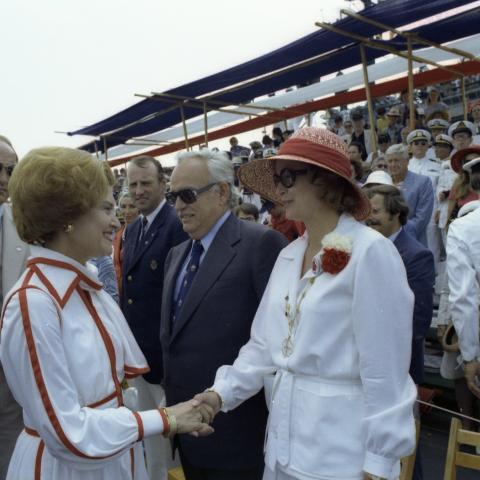Loading timeline: American Bicentennial Celebration
...
Learn more




Bicentennial Independence Day

B0493-15 - President Ford initiates the ringing of Bicentennial bells across the nation while on the flight deck of the USS Forrestal with Bicentennial Administration head John Warner in observance of Operation Sail activities in New York Harbor. July 4, 1976.

B0513-07A. President Ford speaks at Independence Hall in a ceremonial event to mark the nation’s Bicentennial. Philadelphia, Pennsylvania. July 4, 1976.

Photograph of President Gerald R. Ford Standing at Attention while Marines Present the Flag outside of Independence Hall in Philadelphia, Pennsylvania, during the Bicentennial Celebration

1976, July 4 – USS Forrestal (CV-59) – Flight Deck – New York Harbor, New York City, NY – Betty Ford, Princess Grace (Kelly), Prince Rainier III (Grimaldi); Others – standing, talking – 4th of July Bicentennial Event - Operation Sail Event Aboard the USS Forrestal (CV-59) - Her Serene Highness, The Princess of Monaco; Prince of Monaco.